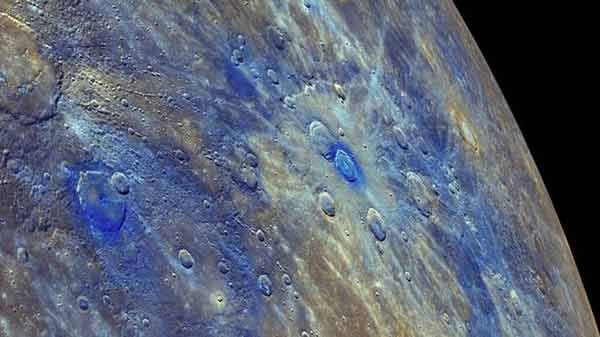
California, US (BBN)-The planet Mercury may once have been encased in an outer shell of graphite, the same material used as pencil lead.
The surface of the innermost planet is unusually dark, and scientists now think they know why, reports BBC.
Scientists analysing data from Nasa's Mercury Messenger spacecraft now think this mystery darkening agent is carbon in the form of graphite.
This graphite may be a relic of the planet's primordial crust, which was later covered up by volcanism.
The findings are published in the journal Nature Geoscience.
Patrick Peplowski from the Johns Hopkins University Applied Physics Laboratory (APL) in Maryland and colleagues analysed measurements of the darkest parts of Mercury's surface taken by Messenger at the end of its mission.
HIS DARK MATERIALS
They found that the darkest "stuff" on Mercury had a carbon-rich composition and that it was associated with large impact craters.
According to the team, this association is consistent with the dark material coming from deeper within the planet and being exposed when space rocks gouged it out.
Like Earth's Moon and the other inner planets, Mercury likely had a global magma ocean when it was young and the surface was very hot.
"As this magma ocean cooled and minerals began to crystallise, minerals that solidified would all sink with the exception of graphite, which would have been buoyant and would have accumulated as the original crust of Mercury," said Rachel Klima, also from APL.
But this primordial crust was obscured by later volcanism and other geological processes.
Some of this carbon-rich material would then have been mixed into the overlying rocks to cause a global darkening of Mercury's surface.
"If we've really identified the remains of Mercury's original crust, then understanding its properties provides a means for understanding Mercury's earliest history," Patrick Peplowski explained.
BBN/SK/AD